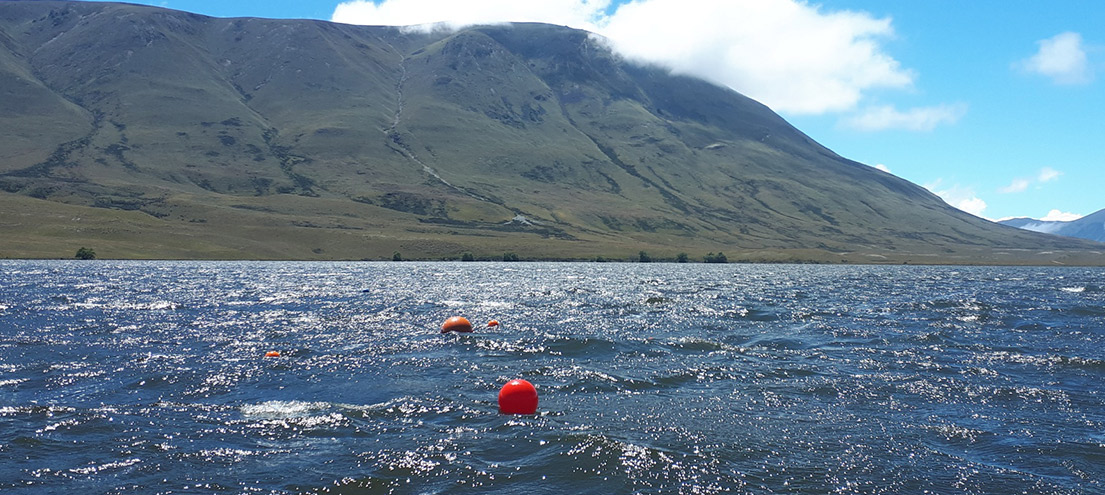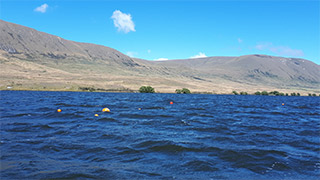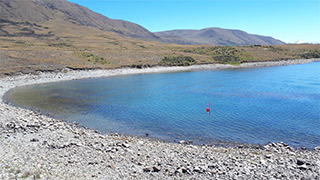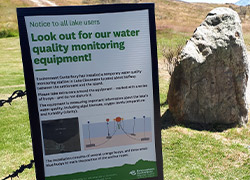
Take care near monitoring gear at Lakes Clearwater, Camp, Emma and Heron this summer
If you’re heading into the water at the Ōtuwharekai Ashburton Lakes this summer, look out for warning buoys where, beneath the surface, essential data sets are being collected by our scientists.
Gathering important data for lake health

Buoys in the middle of Lake Clearwater mark important water monitoring equipment operating under the surface
Director of Science Dr Tim Davie said four monitoring stations (mid-lake at Lakes Clearwater and Heron, and near the shore at Lakes Camp and Emma) are providing detailed information for an urgent programme to improve lake health at Ashburton Lakes/Ōtuwharekai.
“We already have clear evidence that the water quality of these lakes is concerning, with high nutrient levels and algal growth. The focus of everything we are doing now, including this monitoring and on-the-ground work with landowners, is to improve water quality.
"If you’re at these lakes, please stay away from the warning buoys so the important data can be gathered without interruption.”
Powered boats and craft are allowed only on Lake Camp in the Ashburton/Ōtuwharekai lakes area, where there is a marked monitor near the shore in the 5 knot area. Those paddling, swimming or kayaking should take care to avoid the marked equipment at this lake as well as Lakes Clearwater, Emma, and Heron. Other lakes in the area are monitored without submerged equipment.
What’s happening under water

The monitoring site at Lake Camp is near the shore in the 5 knots area
The equipment includes water level recorders, temperature and dissolved oxygen monitoring sensors. The station in Lake Clearwater also measures algal biomass (amounts of algae) and turbidity (water clarity).
A nitrate sensor has also been placed in Gentleman Smith Stream to capture continuous data. Weekly summertime recreational water monitoring at swimming spots in the area will also continue until late March.
The information is being collated and analysed by the science team to give a better understanding of each lake’s unique ecology and how nutrients, algae, and oxygen are interacting with each other. Results will be shared with the public.
Part of a bigger project on Ōtuwharekai Lakes

Signage at Lake Clearwater lets lake users know about the equipment
Dr Davie says the water monitoring is just a small part of a wider programme to directly address the health of the Ōtuwharekai Lakes, initiated by a rūnanga-led working party of statutory agencies and farmers.
“Environment Canterbury, working with DOC and the Cawthron Institute, has conducted detailed work across the whole catchment to assess the changes needed to reduce nutrients to a healthy level.
“In addition, our land management advisory team has been working directly with farmers in the area on immediate voluntary actions they can take this summer to further reduce the risk of nutrient loss to waterways.”
Other members of the joint working group have also been undertaking initiatives and research to benefit lake health, including Ashburton District Council’s work with Clearwater hut holders to replace long-drop toilets.
